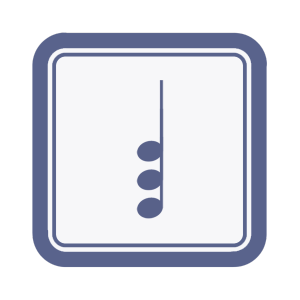
Chord Recognition: Triads
Practice recognising the four fundamental types of chord, the “triads”: (major, minor, augmented, diminished).
After completing this module: you will be able to reliably recognise the four types of triad chord (major, minor, augmented, diminished) in their “root” form.
This module has a sequence of lessons with which you will gradually learn the four types of triad chord. Because every musician learns differently and so you should feel free to adjust the lesson order based on your progress learning the chords.
Module Preview
Contents
- Introduction
- Major and Minor Triads
- Minor and Diminished Triads
- Major and Augmented Triads
- Diminished and Augmented Triads
- All Triads
- Conclusion
How It Works
As you may know, each type of three-note chord can come in different forms, based on which of the three notes is at the bottom of the chord:
- Root
- First inversion
- Second inversion
Start by practising with just the “root position” form of the chords until you can reliably recognise those before introducing the various inversions with the Chord Recognition: Triad Inversions module.
This module lets you practice recognising the four types of triad chords in their root form.
In each lesson you’ll find some information about the types of chord you’re learning, then some training tracks, some testing tracks, and a set of quizzes.
Step 1: Train
Use the “Training” tracks to listen carefully to each type of chord and tune your ear in to the different sounds.
Each time a chord is played, it is then announced so you know which types of chord you’re hearing.
Step 2: Test
Once you think you’re getting a sense of each chord type’s sound, listen to the corresponding “Test” tracks, which include a short pause after each chord.
During the pause, try to identify the chord you just heard.
You’ll hear the correct answer so you know if you got it right and have the chance to hear the chord again.
Step 3: Quiz
If you’re getting the answers right while listening to the “Testing” tracks, it’s time to check your abilities by taking the corresponding quiz.
Example Lesson: Major and Minor Triads
A chord is two or more notes played together. A triad is a particular kind of chord which has three notes: a ‘root’ note, and a ‘third’ and a ‘fifth’ above it. Don’t worry if these terms aren’t familiar to you – all you need to know for now is that triads are a particular kind of 3-note chord.
There are four types of triad, and they form the basis of all commonly-used chords in Western music. In the next few lessons you’ll get to know all four types.
A chord can be played all at once (“harmonically”) or one note at a time. At first we’ll use arpeggios (meaning one note at a time, from lowest to highest) to help us break down the sounds of the triads.
About Major and Minor Triads
Let’s start by listening to some major and minor triads. Use the tracks below to start training.
You’ll hear a chord played harmonically, followed by its arpeggio, then the harmonic version again. This is a bit like spelling out a word:
“Chord”, c-h-o-r-d, “chord”
All together, one at a time, all together
Harmonic, arpeggio, harmonic
Try to hear the difference in the overall sounds of the chords.
People tend to describe major triads as:
and minor triads as:
If you have done some interval training, you can listen out for the different intervals they use:
Major triad: Major 3rd, Perfect 5th
Minor triad: Minor 3rd, Perfect 5th
Once you’ve spent some time listening and you think you can hear the difference between major and minor triads, try using the Testing tracks and Quizzes below to test your new skills.
Training Track
Training
Testing Track
Test
Quizzes
Give it a try!


